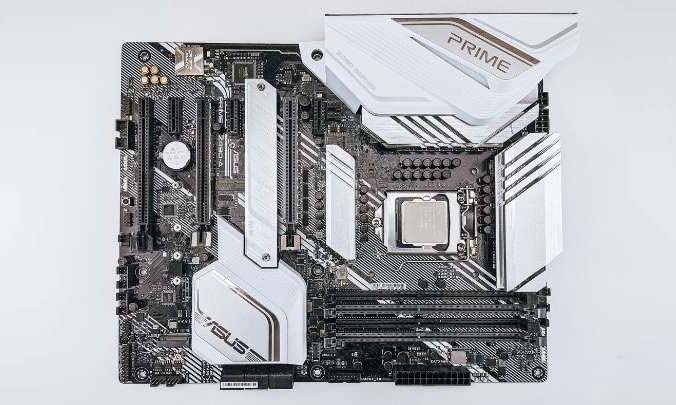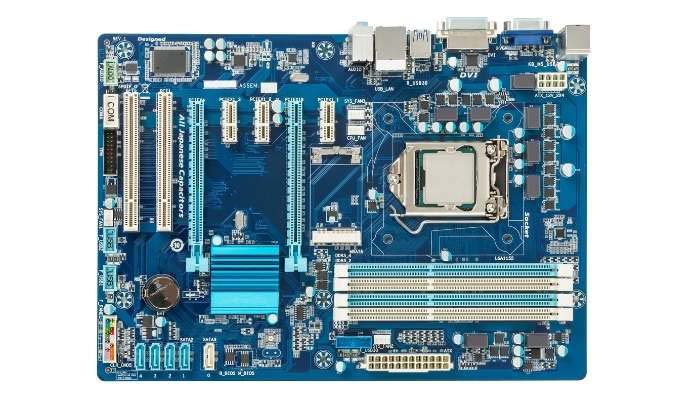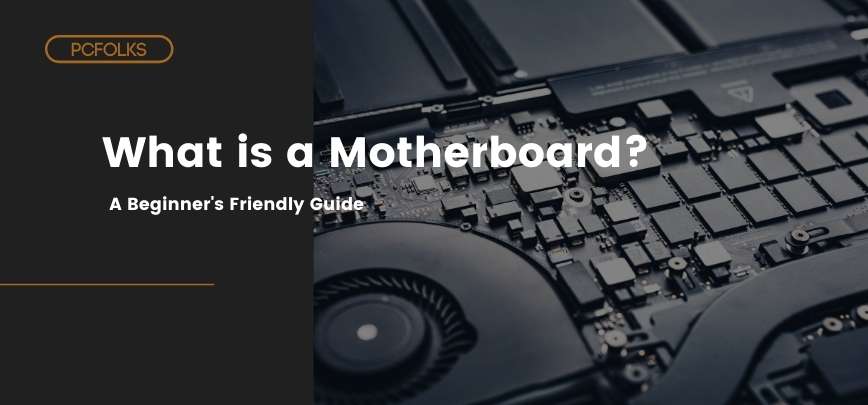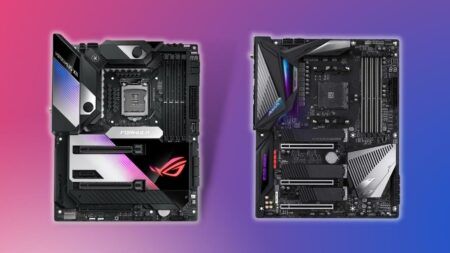Motherboards are an integral part of any gaming rig, and they come in many different shapes and sizes. What is a motherboard? What does it do? What are the major components of the motherboard? These questions and more will be answered in this article, so keep reading!
What is a Motherboard?

One of the things that a computer needs to work is something called a motherboard. The word “motherboard” comes from what it used to be, originally just a board that had all the wires leading off of it and would plug into systems, back when they were made with circuit boards instead of chips.
While this has changed over time, and motherboards are now produced differently, there is still some truth behind the name. These days most modern motherboards have integrated circuits on them as well as wiring.
What does a Motherboard Do?
A motherboard is used to connect the computer to make it work. What’s on a Motherboard? The motherboard contains many different components needed for any PC system, such as RAM slots and SATA connectors.
Motherboards also contain chips that need their own power supply or supplied by the PSU (power supply unit). What Is A Motherboard Made Out Of? For instance, most motherboards have an ATX form factor with 12″ x 13″ dimensions, but some may be larger-sized based on what they can accommodate.
What is Inside My Computer’s Motherboard? Most will have things like USB ports and audio jacks, so you’ll want to check your manual if you’re not sure whether there are extras on your board!
What is Inside My Computer’s Motherboard?
Most motherboards will have things like USB ports and audio jacks, so you’ll want to check your manual if you’re not sure whether there are extras on your board.
What Kind of Motherboard Should I Get For Gaming? If you’re looking for a gaming motherboard, then look for one that is VR-ready and has an Intel Z270 chipset with extensive cooling options.
Most motherboards can be made out of plastic or metal, but some may also be manufactured in papercraft designs! What Motherboard Do You Recommend For Gaming? We have already covered the Best Z390 Gaming Motherboards that supports up to 2400 MHz DDR IV memory and CPU overclocking features such as Turbo Boost.
Major components of motherboard:

The CMOS battery
The CMOS battery is a small, rectangular lithium-ion power source that retains system settings and configuration data. CMOS memory is crucial to a computer’s ability to function.
It stores all the essential information for properly configuring your PC and works even when you’ve switched it off, automatically avoiding reconfigurations on power-ups or while running low energy.
The motherboard can be organized in three different ways: an external battery system, one with onboard batteries that are weaponized into backups of essentials data files only accessible through password protection.
Software like biometrics passwords from fingerprint scans, or by pressing buttons located right next to where your mouse usually rests so as not to disturb anything else around the keyboard when access needs arise quickly.
Chipsets
Motherboard chipsets are what keep the show running smoothly. They monitor data flow, maintain a connection between peripheral circuits and memory and secondary cache- which is used to optimize the performance of your system for faster speeds.
The chipset’s most important component is the northbridge that handles communication with both processors (north) and southwards devices such as drives on new motherboards by providing access through either PCI or AGP slots.
Switches and Jumpers
As much as I would love to tell you about the DIPs, jumper pins, and caps in detail, it’s really not worth your time. The best solution is for me to let you know that they are all important parts of a well-organized circuit board design that will help keep high configuration goals up because of their old-fashioned nature. You won’t get another one.
With the help of switches and jumpers, you can change your motherboard settings to meet any specific needs. These manufacturing parts provide a pathway to reconfigure the circuitry on a motherboard with ease. Just make sure that you know what each setting is for before changing it.
The beautifully organized structure is based on a few things like DIP, jumper pins, or even jumper caps! Replicas of commonly used switches are attached to logic boards for convenience in use.
If your motherboards feel a little outdated, you might want to take extra care when installing them. Jumper pins and jumper caps help with the installation process for old-fashioned boards that can be difficult to work with otherwise.
Solutions: Special attention is required because our beloved motherboards need all of their connections to achieve optimum performance levels! Say goodbye jumpers – they’re like buds on a motherboard’s branches and connect its components together nicely.
Still, if something should happen, then have no fear. We also provide high-quality replacement parts such as jumper caps that fit right onto any protruding pins, so there will never be an issue down the line again.
RAM
Instantly retrieve important data from your computer’s RAM when you need it with the help of a high-performance memory module.
This short-term storage house prevents process bottlenecks while allowing for easy, instant access to information often used during work but needs constant protection against accidental deletion on hard disc drives.
Memory modules are measured in bytes and return all content back after an individual power cycle or shutdown, so there will be no lost files!
Floppy and IDE Controller
The floppy controller is a key component of most computers that has the capability to support four drives at once. The 34-ribbon cable can be seen as an extension, connecting with circuit boards on both ends and binding them together.
While the IDE Controller (formally known as Integrated Drive Electronics) acts as a boundary between data paths from motherboard storage disks and assigns each drive its own set of functions such as read/write or input-output operations.
USB Ports
Modern-day motherboards have USB ports that will connect to PCs via the universal serial bus. The front of your system has several USB pins, and this connection with other devices is what makes it so incredible – you can remove or attach a device without rebooting!
There are various styles for these rectangular-shaped devices; some may be mice, keyboards, cameras, and scanners. These ten pin connectors on 2 rows bordered in five each allow a general connection between the motherboard’s circuitry.
BIOS
The BIOS is a software system that interfaces the hardware and operating systems. This read-only memory has reduced essential features to make sure every part of your computer works together smoothly.
It was born out of necessity when computers became more complex as manufacturers experimented with new components like hard disks or CD drives which they weren’t ready for yet!
The name “BIOS” may have changed over time too, from device drivers originally meaning devices connected by cables to boot discs (CDs) and then finally called the acronym: Basic Input Output System.
Wrapping Up:
The motherboard is the beating heart of your PC. It’s responsible for powering all the components in your computer, and it’ll dictate what you can do with each component.
A good motherboard will help ensure that you don’t run into any problems when using your PC, and an incredible one might even offer some pretty cool features to make sure everything runs as smoothly as possible.
Whether you want a capable board or are looking for something more high-end, this guide should give you a few ideas on where to start shopping around.

